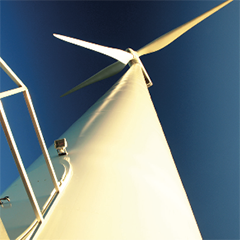Renewable energy, primarily wind and solar, will represent the largest source of electricity growth over the next five years, driven by falling costs and aggressive expansion in emerging economies. Globally, progress continues to be strong with increasing annual installed capacity and investments. As solar power becomes more economical, wind systems have to become competitive to continue to grow.
Consequently, development of new technologies which reduce turbine maintenance and life cycle costs, improve reliability and lower levelised cost of energy (LCoE) will result in wider adoption of wind power generating systems.
LCoE is one of the utility industry’s primary metrics for the cost of electricity produced by a generator. Key inputs to calculating LCoE include capital costs, fuel costs, fixed and variable operations and maintenance (O&M) costs, financing costs, and an assumed utilization rate for each generator.
Wind asset operators understand that O&M costs must be minimized to maximize energy generation. Thus, turbine reliability and high energy throughput are a critical measure of wind generation.
Although all components in a wind turbine must work reliably, a turbine’s wind pitch system, whether electric or hydraulic, is a key component required for optimum blade pitch control under adverse wind conditions; to maintain turbine uptime for continued power generation.


























